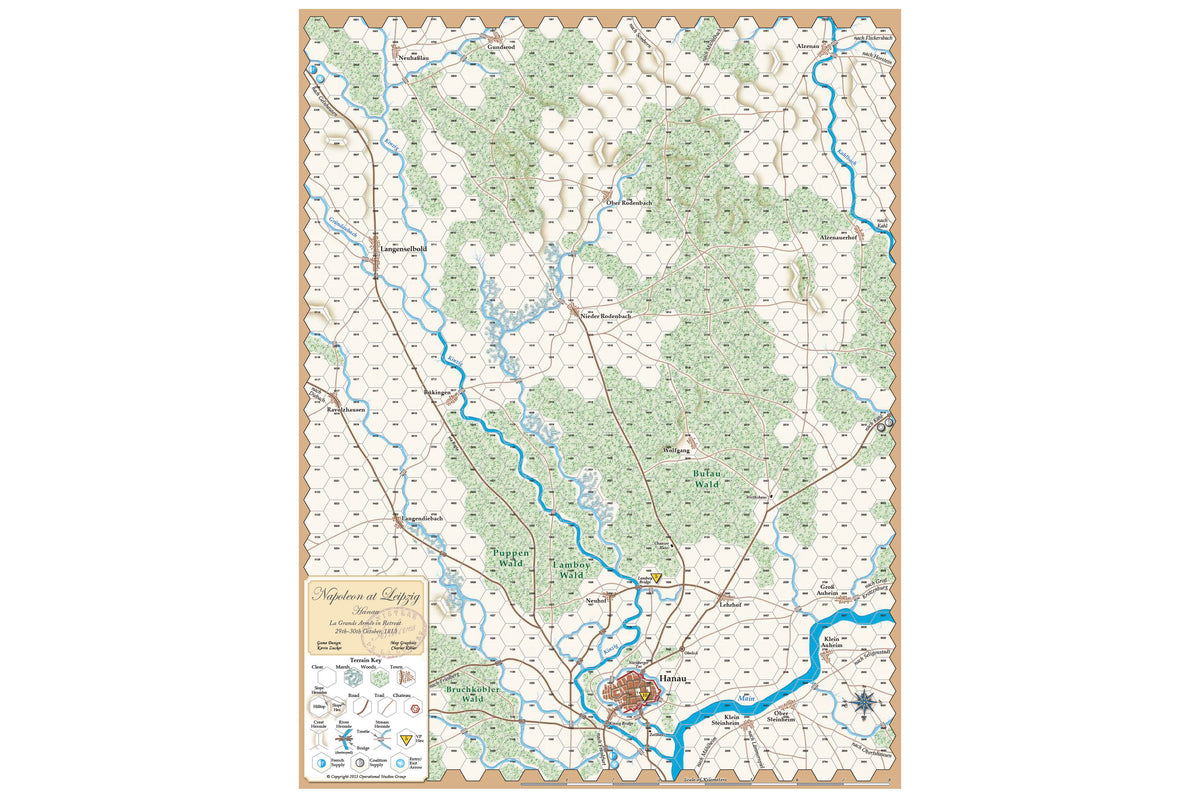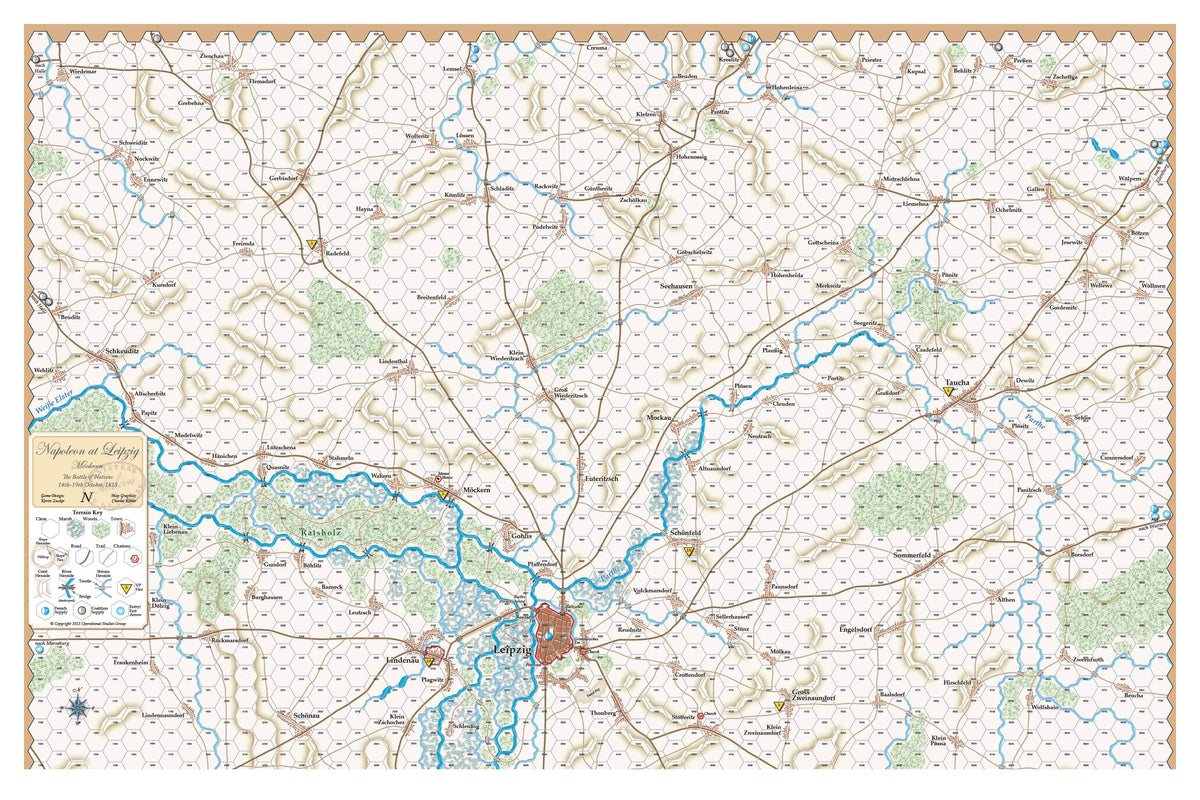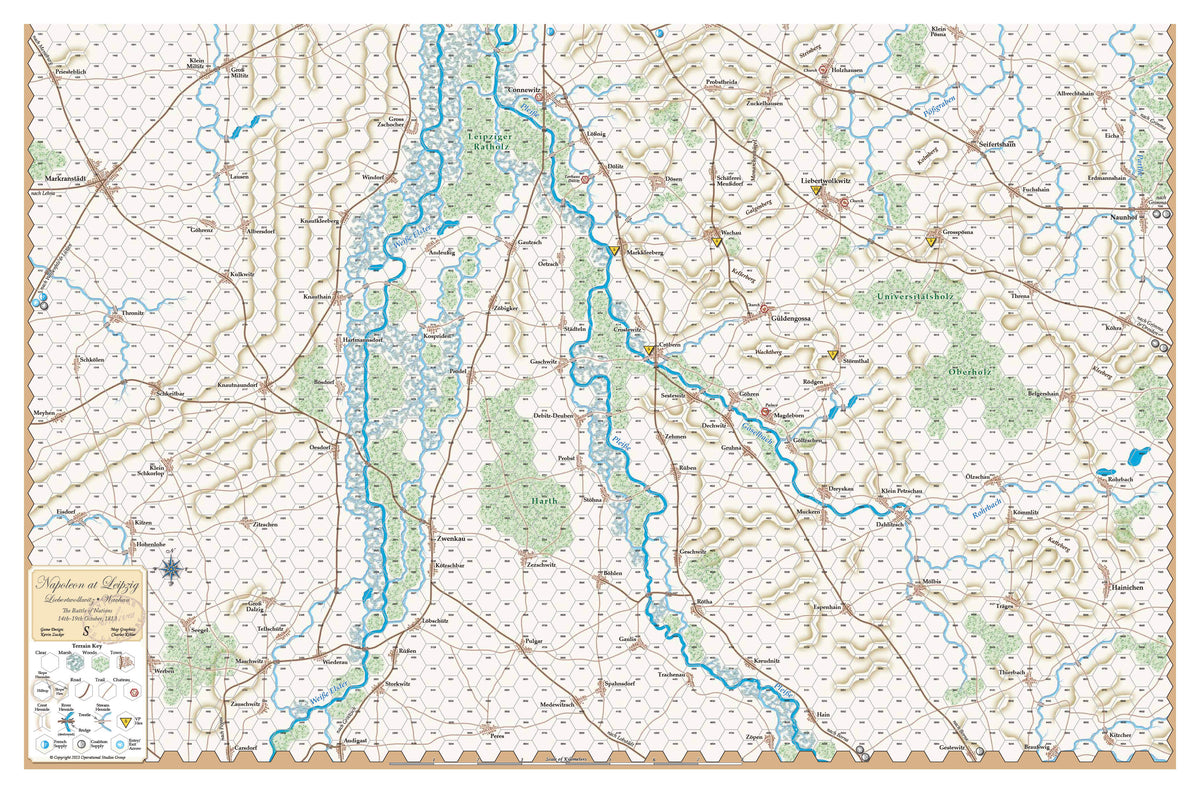
Napoleon at Leipzig
Napoleon at Leipzig is a comprehensive game with a proven track record of excellent re-playability, among the most popular Napoleonic wargames of all time with 20,000 copies in print across the first 4 editions. Now it has a bigger playing area and more manpower for both sides, all working within a smooth and efficient engine of 19th-century warfare.
Liebertwolkwitz, Epic Cavalry Battle, 14 Oct.
Reaching the battlefield days in advance, Murat took post at Wachau and Liebertwolkwitz with the II Corps, the V Corps, VIII Corps, 4th and 5th Cavalry Corps. When he finally arrived, Schwarzenberg intended only a reconnaissance in force, but blundered into an encounter battle. Murat's orders were simply to hold the line Markkleeberg-Wachau-Liebertwolkwitz. But with typical flamboyance he unleashed his entire cavalry reserve, creating the largest cavalry battle of the 19th century.
Image: portrait of Joachim Murat


Wachau-Mockern, Fire on Two Fronts, 16 Oct.
Marmont’s French VI Corps had been ordered to march to the southern front, and had started to withdraw when Blücher's advance began. With the Elster River protecting their left flank at Möckern, the French established a line running toward Wiederitzsch along a ridge protected by an 80-gun grand battery. A large manor with attached farm buildings and a massive brewery anchored the left. Fighting behind barricades and streets blocked with abattis, the French staved-off defeat.
In the south, the Austrian II Corps (Merveldt) advanced towards Connewitz via Gautzsch, while General Kleist’s Prussians, moving along the Pleisse River, attacked Marshals Poniatowski and Augereau in the village of Markkleeberg. The Russian II Infantry Corps attacked Wachau with support from the Prussian 9th Brigade. On the far right, Klenau's IV Corps attacked Macdonald and Lauriston in Liebertwolkwitz.
Image: Portrait of Auguste Frédéric Louis Viesse de Marmont
Leipzig, Triple Envelopment, 17-18 Oct.
On the morning of the 18th, the troops of the French Army once more dressed their lines and made ready to play their part, with the consciousness that this was shaping up to be the last performance for them, their comrades, and most of the Grande Armée. The Emperor had ordered them to pull back, abandoning the battlefields of the 16th, toward the Leipzig suburbs, on a per-imeter of under 20 km., with only one way out—a bridge at the Ranstädter Tor.


Hanau, Grande Armee in Retreat, 29-30 Oct
Napoleon made his headquarters at Erfurt on 23 October and began to reorganise his army. On the 26th, he directed his columns toward Eisenach and Fulda, their ultimate destination Mainz (Mayence) on the Rhine. On 28 October Wrede’s advance guard arrived 68 kilometers east of Mainz, capturing Hanau from a small garrison. When Wrede became aware that Napoleon and the Guard were present, he realized there was no hope of getting all his troops back across the Kinzig and organized a delaying action.
Image: Bavarian infantry crossing the Kinzig bridge.
Game Components
Napoleon at Leipzig
Each game includes:
Game Box
2 Maps 34"x22"
1 Map 17"x22"
2 Counter Sheets (560 die-cut player pieces)
2 Booklets (System Rules and Study Folder)
15 Player Aid Cards (TRC x 5, Initial Setup x 5, Casualty x 2, Combat Results, Reorganization, and Weather)
4 Resource Cards (Card Instructions, Combat Tables, Sequence of Play, Victory Worksheet)
Deck of 100 cards
Visit our Game Components section for details

Thursday Night Gamers
Napoleon at Leipzig, Part I
Game Maps
Napoleon at Leipzig
Each game includes three high quality maps (shown below): Two 22" x 34" maps and one 17" x 22" map.
Operational Studies Group (OSG) is a leader in the design and production of Napoleonic Wargames. Our maps are extensively researched, historically accurate, and printed on heavy cardstock in full color.

PLAYER RESOURCES
CLICK PDF FILE TO DOWNLOAD
• Napoleon at Leipzig Update 20FEB22
• Napoleon at Leipzig Study 1.51
• Hanau Setup Sheet, French_1, v1.01
• Hanau Setup Sheet, Coalition_1, v1.01
• Leipzig Setup Sheet, French_1, v1.03
• Leipzig Setup Sheet, French_2, v1.03
• Leipzig Setup Sheet, Coalition_1, v1.03
• Leipzig Setup Sheet, Coalition_2, v1.03
• Leibertwolkwitz Setup Sheet, French_1, v1.01
• Leibertwolkwitz Setup Sheet, Coalition_1, v1.02
• Battle of Leipzig Setup Sheet, French_1, v1.02
• Battle of Leipzig Setup Sheet, French_2, v1.02
• Battle of Leipzig Setup Sheet, Coalition_1, v1.02
• Battle of Leipzig Setup Sheet, Coalition_2, v1.02






